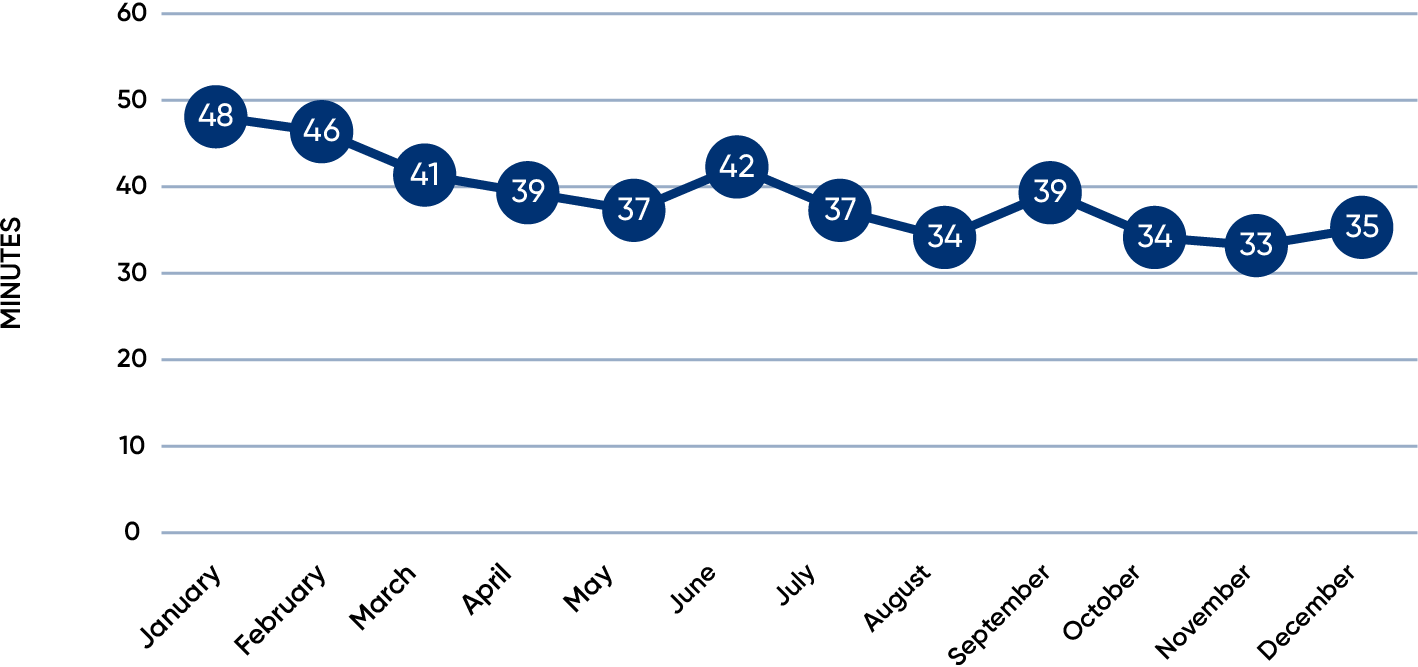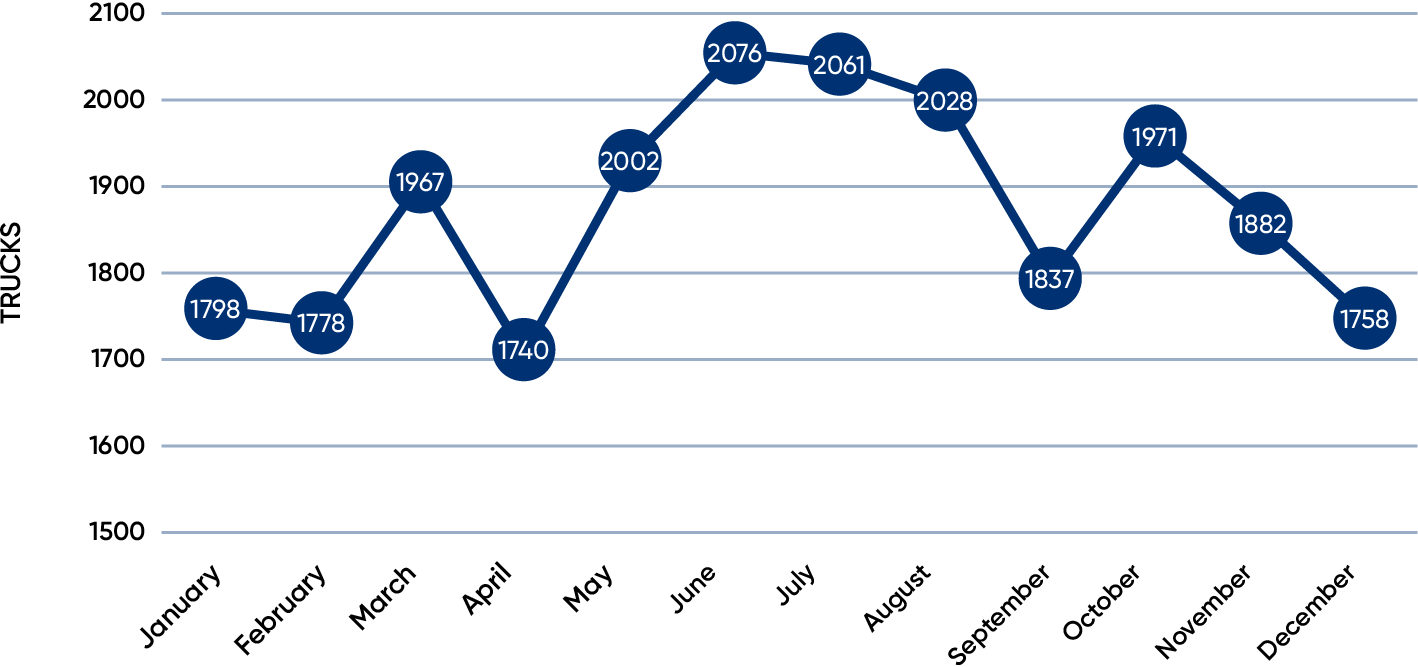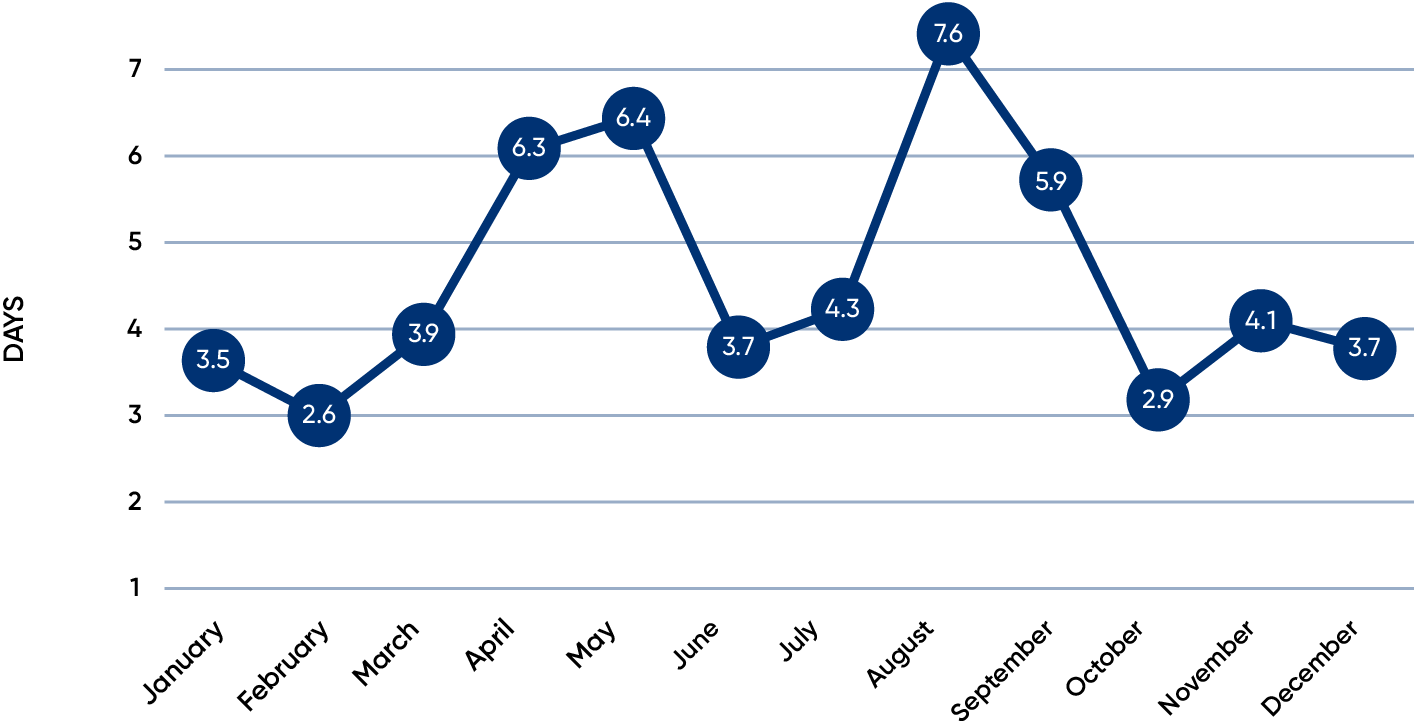International
As a strategic asset whose primary role is to ensure optimal service to North American businesses and citizens, the Port of Montreal is always read to consolidate its international trade links and maintain sound operational performance.

Operational performance
Given the congestion in ports around the world, early last summer the Port of Montreal launched a No Congestion campaign in the form of banners and print ads that link to a dedicated page updated weekly on the website. This publicly available data showed that the Port of Montreal was spared the severe congestion episodes that affected many U.S. ports and that traffic flow stayed steady throughout the year.
Specifically:
- Of the 2034 vessels that called the Port of Montreal in 2021, averaging seven per week, time spent waiting at anchorage for container ships remained zero at all times.
- The total processing time for Port of Montreal trucks remained under 60 minutes from entry to exit of the terminals throughout the year. In 2021, the average daily truck count was 1910, a 15% increase over 2020. This trend continued throughout the year, peaking at 2817 in April following the dockworkers’ strike.
- The average dwell time for import containers bound for rail was five days. Two events contributed to the temporary downturn: the dockworkers' strike in April and the forest fires in Western Canada in August that disrupted train traffic across the country.
- Container handling time (trucks)
-

- Number of trucks per day
-

- Container dwell time (rail)
-

“What I like most about my job is the contact with clients. Our relationship is special. We make sure we understand their needs, we listen, we’re present and we’re transparent. I think this our real strength and what sets us apart. We’re able to build strong relationships, but more importantly, we’re able to maintain and strengthen them despite the challenges."
— Rosetta Iacono, Director, Growth and Commercial Relations
Trading with the world
Connected worldwide to over 140 countries and at the core of the strategic and innovative St. Lawrence River trade corridor, the Port of Montreal continued to improve its service offering. During 2021, the MPA consolidated its trade ties with India and created a new direct link with China, in addition to participating in the expansion and dynamism of the St. Lawrence-Great Lakes axis.
- Signature and renewal of international agreements
-
Trade relations between India and Canada have grown significantly in recent years. In 2021, the trade partnership between the Port of Montreal and the Adani Group, which operates the Port of Mundra, India's largest commercial port, was renewed for a period of five years.
This agreement further strengthens the Port of Montreal's strategic position as North America's gateway to Asia's container market. This new agreement focuses on business development, the optimization of logistics services and port facilities, the application of new technologies to marine and intermodal transportation, and industry best practices.
- A record breaker on the St. Lawrence: the largest container ship ever to sail the river
-
As the backbone of a network of commercial waterways linking the Atlantic Ocean to the Great Lakes, the St. Lawrence River confirmed its position as a competitive and strategic shipping channel. The MSC Melissa, a 6,730 TEU (twenty-foot equivalent unit) container ship measuring 303.89 metres in length and 40 metres in width, called at Viau Terminal before returning to Europe, the new holder of the title of the largest container ship to sail the St. Lawrence.
- First direct voyage between China and Montreal
-
For the first time in its history, the Port of Montreal welcomed a container ship directly from China, without cargo transshipment in the Mediterranean.
Chartered by Fracht FWO, the Happy Rover established the first direct shipping link without transshipment between Asia and the Port of Montreal. It was unloaded at MGTP-operated Racine Terminal. Such a service demonstrates the fluidity of trade and the availability of facilities in Montreal, along with the efficiency and strength of its key supply chain partners.
- Shortsea shipping back in the Seaway
-
In a promising new collaboration between the ports of Hamilton, Ontario, and Montreal, the Port of Montreal welcomed the Sedna Desgagnés from Hamilton via the St. Lawrence Seaway – a feeder service both ports are working to implement on a regular basis. This inaugural voyage marked the resumption of cabotage on the Great Lakes between Quebec and Ontario, as the 300 or so containers unloaded in Montreal then headed for international markets.